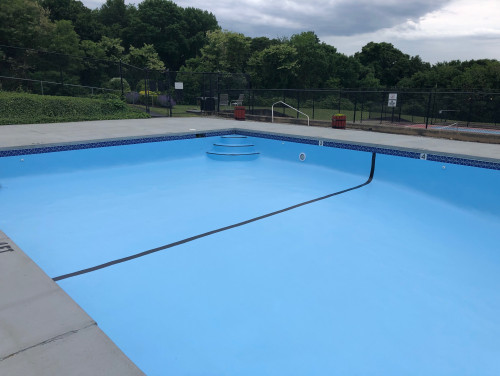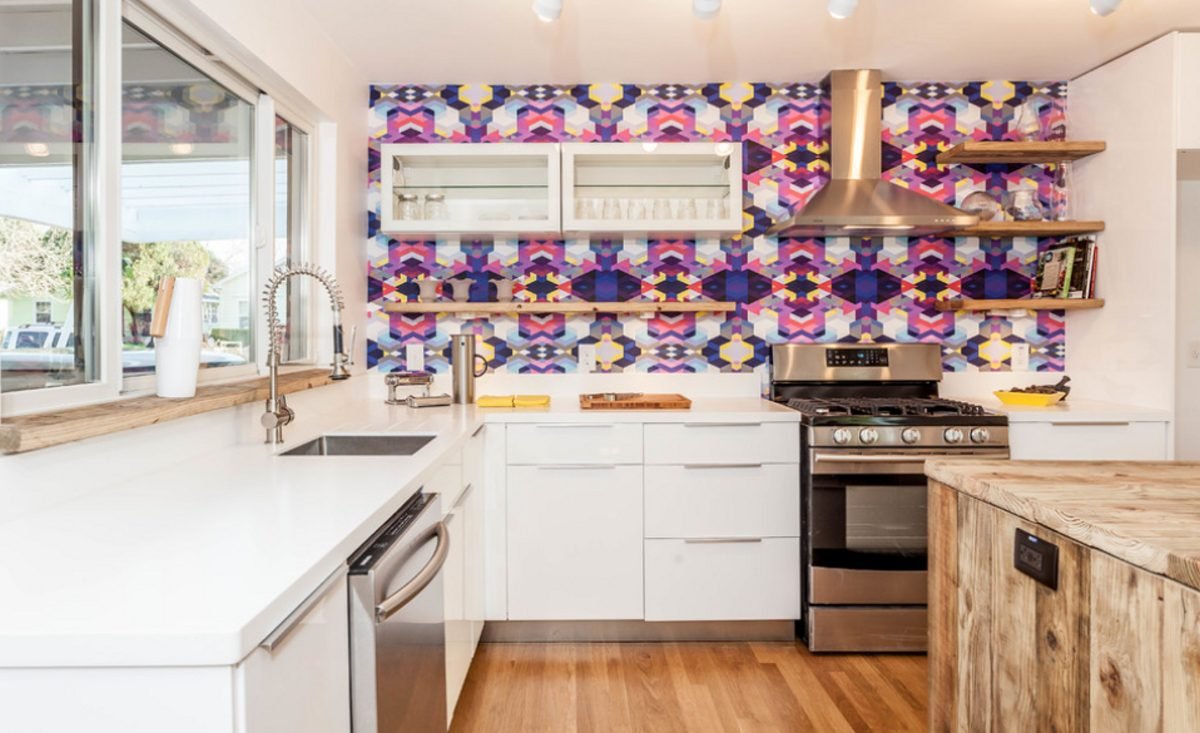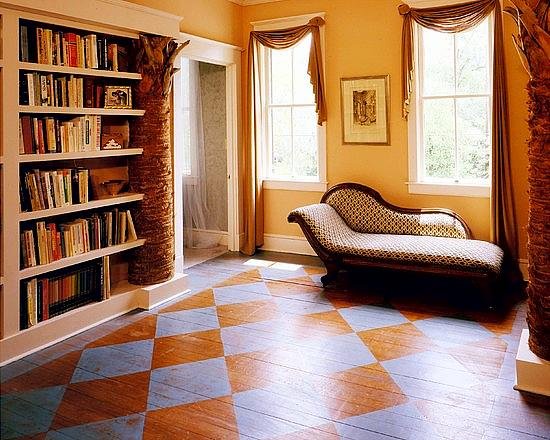Does your pool need a new coat of paint?
By painting your swimming pool you can make the pool look like new again. Pool paint comes in many different colors, and is an inexpensive coating compared to other surfaces.

Photo by W.M. Painting, Inc. – More pool photos
In fact, there are three different types of swimming pool paint you could buy:
1. Epoxy swimming pool paints (Marine Paints) – are typically the most durable (life span of five to seven years) and suitable for swimming pool applications. This type of paint includes 2 parts, the resin and hardener. Most epoxies mix at a rate of one to one to form a resin.
2. Acrylic swimming pool paints – do not require a hardener or catalyst system like epoxy paint does. The paint is a polymer resin, but a lot of pool paints are water based. This means that the paint is suspended in water, not oil. Therefore, it’s a lot easier for the homeowner to apply since the fumes are not as strong as they would be with oil based paint.
3. Rubber Based swimming pool paints– Chlorinated rubber paint has a life span two to three years. Rubber base maybe is not as durable or expensive as epoxy paint, but is dependable, easy to use, inexpensive pool paint.
However, when attempting to paint a pool, one must first select the proper paint, prepare the pool properly, and follow all manufacturer application guidelines.
Tips to Buy an Above Ground Swimming Pool (howtobuildahouseblog.com)
Steps:
Preparation
The most important part of every paint job is the preparation.
1. Drain any water from the swimming pool and remove all debris. Be sure to remove any hydrostatic relief plugs.
2. Determine the type of pool paint that is on the pool. You cannot paint a pool that has epoxy paint with rubber base paint or vice versa. You can use acrylic paint on any surface.
3. Determine how many coats of paint are on your pool walls – Either peel off and count the layers in an area that is flaking or scratch through with a pocketknife to count the layers. Painting over a coat or two is fine, but you’ll likely encounter problems with adhesion if the old paint is thicker than that.
4. Clean the concrete surface.
Scrape all old, loose pool paint off of pool surface. A high pressure power washer will help.
Use an acid wash mixture of 50% water and 50% muriatic acid to clean the pool surface. Thoroughly scrub the walls and floor with a scrub brush then rinse the entire surface with clean water.
Clean the surface again with tri-sodium phosphate (TSP) to neutralize the acid and remove dense areas of oil or grease. Rinse it completely with fresh water.
5] Caulk or patch any existing cracks and holes with hydraulic cement. Follow the cement manufacturer’s instructions.
Painting
1. Apply most chlorinated rubber paints directly to the surface; these paints are self-priming. Epoxy paints generally need a coat of primer, especially on bare concrete.
2. Pump out any standing water and allow 3-to-5 days for the pool surface to dry. Only acrylic paint can be applied to damp surfaces.
3. Apply paint with a 3/8” nap roller. Start in the deep end of the swimming pool, work your way to the shallow end. Use an extension pole on your roller for the deep end walls. Use a brush to cut in on the tight areas around pool fixtures such as lights, drains and valves.
NOTE:Do not apply paint if the temperature is below 40 degrees Fahrenheit or above 90 degrees. Extremely humid weather can be bad.
4. Carefully follow all manufacturer drying and curing directions. Temperature is critical to epoxy paints to ensure proper curing and coating.
5. You should wait 5 days before filling the swimming pool so your new paint job can cure completely. After the cure time, fill the pool without stopping until the pool is full. Adjust the filter and chemical settings to ensure proper maintenance.


